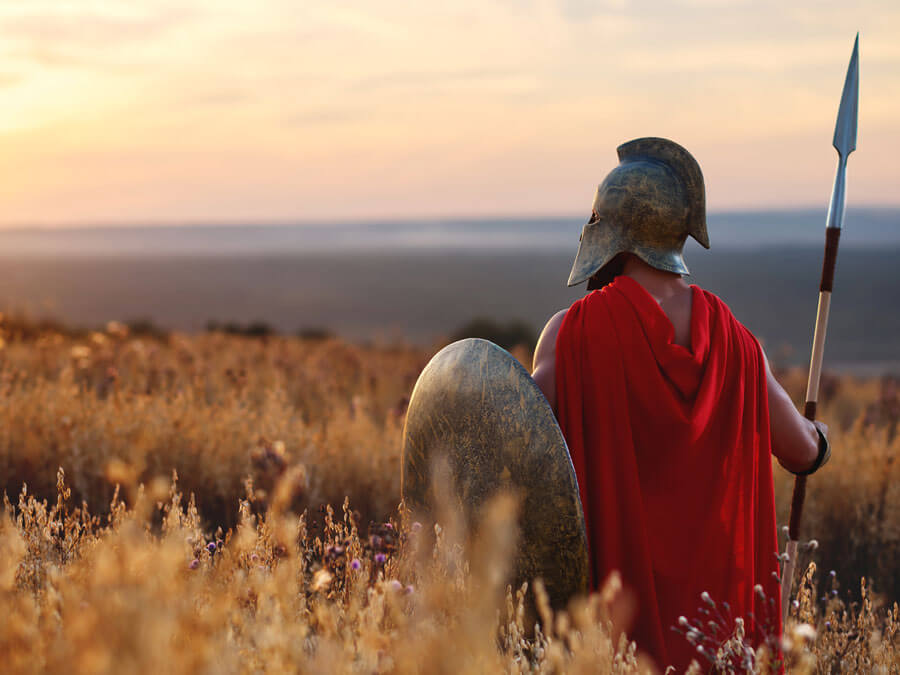300: The Movie
The film '300' focuses on one battle during the long Greco-Persian Wars, the armed conflicts between the Persian Empire and the Greek city-states of the time. In 480 BC, the King of Persia, Xerxes, demands the subjugation of Sparta to his rule. The Spartans, however, being proud and honorable warriors, could not accept such an offer. King Leonidas, despite the objections of the Senate and the ominous oracles, decides to confront Xerxes' numerically superior forces in the strait of Thermopylae. He guides a force of 300 heroic Spartan warriors towards the battlefield and a few hundred more Thespians join their forces.
Zack Snyder's film was not shot in order to teach history lessons. The "300" movie is based on the eponymous comic book by Frank Miller (creator of "Sin City"), which presents only a free version of the battle, enriched with several fantastic elements. Therefore, historical inaccuracies are unavoidable and excusable since the film is not based on real history but on a fantasy graphic novel. Nevertheless, since the movie was the reason that many people around the world discovered this part of history and the glorious battle and sacrifice of the 300, let’s see what the movie got right and wrong, and go beyond it by discovering the real events and who the Spartans really were.
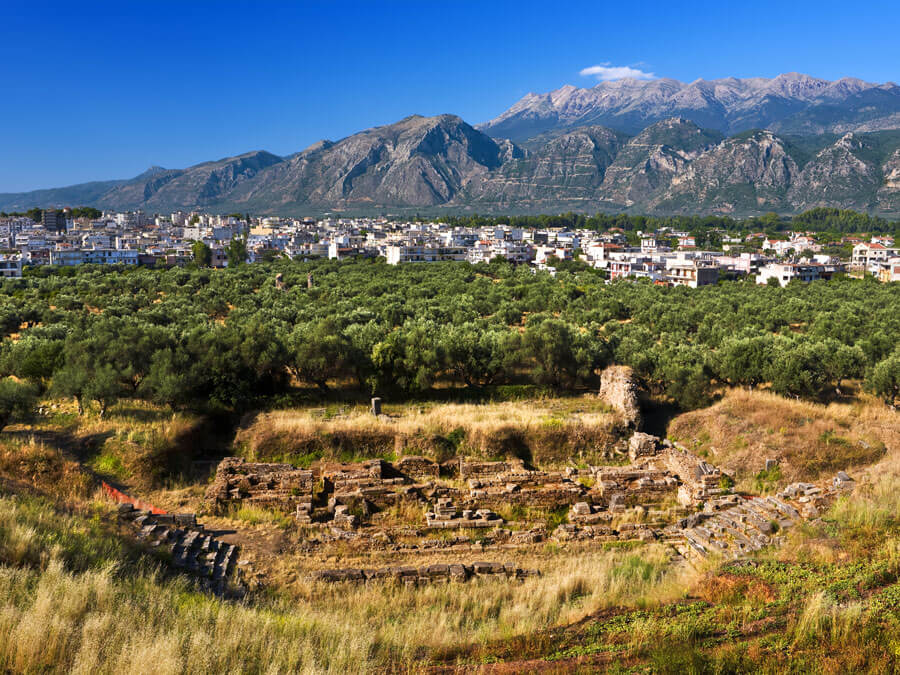
The “300” Movie vs. the Historical Events
Frank Miller, author of the graphic novel "300" on which the homonymous film was based, said that he traveled to Greece and researched history as much as he could. He walked the battlefields and took into account the historical elements in the writing of the work. However, he clarified that his work was not a realistic representation of the historic battle of Thermopylae, but a free version of the battle that contains several fantastic elements. So, let’s see what the actual differences were between the "300" movie and the historic battle of Thermopylae.
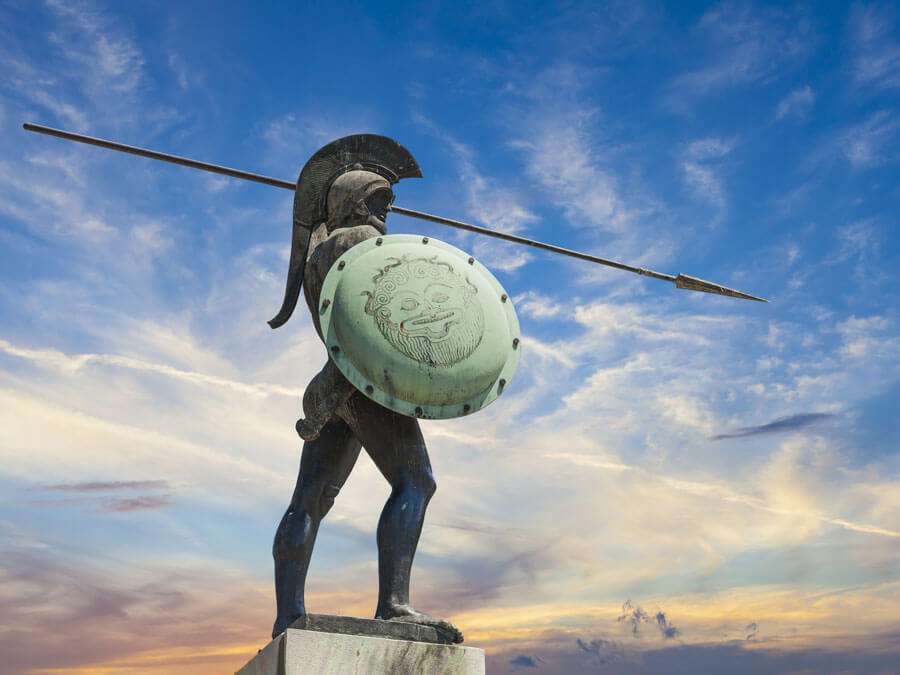
The Status Quo in Greece
Let's start with the geopolitical reality of the time. The film hints that the Spartans were the only Greek resistance against the Persians - the only big Greek force that cared to stop the Persian invasion. This, of course, is not true. There were coordinative efforts between many Greek city-states (most of those that were still free and have not already fallen under the Persian rule). For the first time in Greek history, there was an alliance with the foremost purpose to unite all anti-Persian forces in the whole Greek world. The strategy for countering the Persian invasion was discussed in a war council that took place in Isthmus of Ancient Corinth. During the war council, many Greek city-states took part, among which was Sparta, Thebes and Thessaly. The Athenian general and politician Themistocles was also in the council and he was the key figure in uniting the Greek powers and devising the battle plans.
![Credit: Bibi Saint-Pol <a target='_blank' href='http://creativecommons.org/licenses/by-sa/3.0/'>[CC BY-SA]</a> Map during the Greco-Persian Wars (only a small part of the Persian Empire is shown)](/images/Blog/300/Greco_Persian_Wars_map_300.jpg)
The War Strategy
Knowing the overwhelming numbers of the enemy, the Greek war council decided that it was important to have two decisive battles, one by land and one by sea. Spartans would be leading the infantry and the Athenians the navy. The hope of the Greeks was the new Athenian fleet. No one dared to think that it would be possible to make a decisive blow against the Persian land troops. The plan originally was to stop the invasion at the valley of Tempi, south of Olympus.
However, they soon abandoned this plan because they could be circled easily from the west and they were not sure of the intentions of the Thessalian people, who indeed allied with the Persians soon after. So, they changed their battle plans and decided to make their stand at Thermopylae. The landscape of Thermopylae could help the Greeks gain some advantages that could neutralize the superior numbers of the Persian army: the straits hindered the development of the enemy’s ground forces, while the small strait of Artemisium ruled out a possible encirclement of the collaborating Greek fleet. If they managed to keep the advance of the Persian army on Thermopylae for a short time, maybe the fleet would have the opportunity, if the conditions were favorable, to get a decisive victory.
![Credit: BMartens <a target='_blank' href='https://creativecommons.org/licenses/by-sa/3.0/'>[CC BY-SA]</a> The battle of Thermopylae](/images/Blog/300/Battle-of-Thermopylae.jpg)
The “300” movie shows Leonidas defying the corrupted Spartan political leadership and charging with his elite guard to Thermopylae, to defeat the Persians by themselves. However, this is not how the events really took place. When the Spartans were informed of the advancement of the Persian army and the need to march their forces to Thermopylae, there were confronted with a problem. At that time, they were celebrating their religious festival called “Carnea”, in honor of Apollo Carneios. The festival was held once every year and lasted for 8 days. During the festival, no armed conflict was allowed, in a similar fashion to the Ancient Olympic Games. The Spartans decided to send one of their two kings, Leonidas, with his personal guard and delay the Persians until the whole Spartan army arrives. The rest of the army would march right after the religious truce was over, hoping that they would arrive in time.
![Credit: Joaquin Ossorio Castillo / Shutterstock Molon labe, meaning “come and take [them]”, the famous reply of Leonidas to Xerxes](/images/Blog/300/Molon-lave_Joaquin-Ossorio-Castillo_Shutterstock.jpg)
The Heroes
When it comes to the battle at Thermopylae, the 300 movie is quite far from reality. Leonidas leaves Sparta with only 300 men and on their way to Thermopylae a small force of Arcadians led by Daxos join them. However, there were more men present in the battle of Thermopylae. With the 300 men of Leonidas, there were about 3800 Peloponnesians (Lacedemonians, Arcadians, Corinthians, Tegeans, Mantineans, Philians and Myceneans). Besides the Peloponnesians, there we also 700 Thespians, 1000 Phocians and 400 Thebans. The total army marching to Thermopylae numbered about 6200 men. Another 900 men should be added to this number to account for 3 helots (slaves of Sparta) serving each Spartan warrior.
Not all of them fought in the battle. Leonidas assigned the 1000 Phocians with guarding the mountain passage that could encircle their position if found by the Persians. When Ephialtes betrayed the Greeks and showed the passage to Xerxes, a runner informed Leonidas that they were about to be encircled. In the movie, it is Daxos of the Arcadians that informs Leonidas and then leaves the battlefield with his troops. In reality, upon discovering that his army had been encircled, Leonidas told his allies that they could leave if they wanted to. Part of the army took him up on his offer and fled.
However, around 2000 men stayed behind to fight and die. The 700 Thespians, led by their general Demophilus, refused to leave and committed themselves to the fight. The 400 Thebans also stayed to sacrifice themselves. The helots who had accompanied the 300 Spartans were probably also present. Knowing that the end was near, the remaining Greek forces marched into the open field and met the Persians head-on. Considering that the 700 Thespians and the 400 Thebans were not professional soldiers like the 300 Spartans and were not trained from an early age to fight and die in honor, their decision to stay and fight till death may seem by some even more heroic than the 300’s.
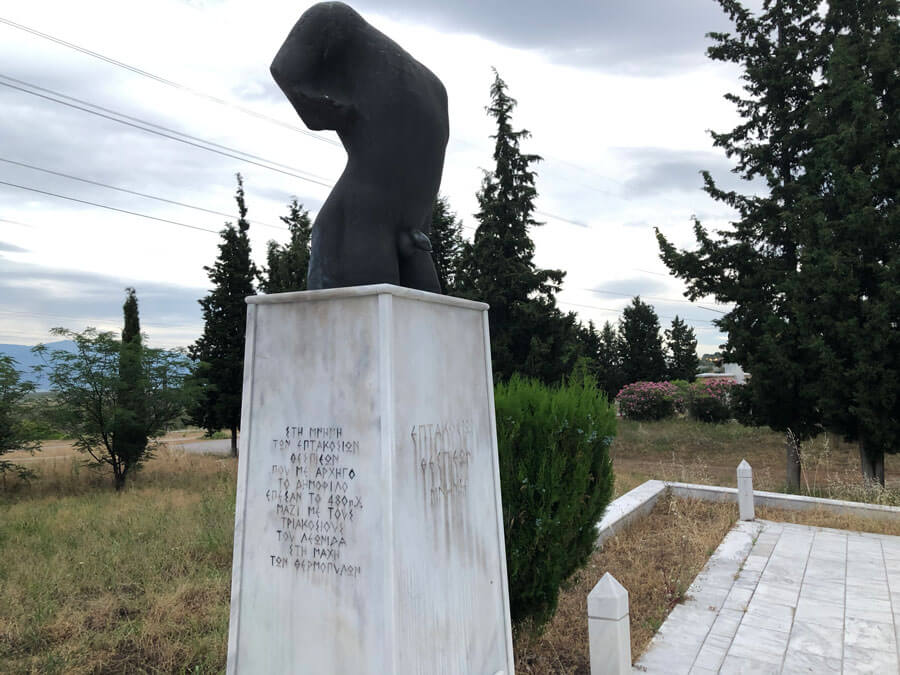
The Battle
As for the battle itself, there are many differences from the real battle, that were made for cinematic purposes. For example, the 300 film shows the Spartans half-naked during the battle without any armor to protect their upper body, which was not the case with the real Spartan warrior. Spartans relied a lot on their body armor. They wore grieves over their legs, a breastplate and a helmet. By this period, the solid bronze armor plates have been replaced with pieces made from layers of linen stuck together, stiffened by immersion in vinegar and salt, and reinforced with layers of bronze. They also carried a large round shield, very similar to the movie’s, a long lance and a short iron sword.
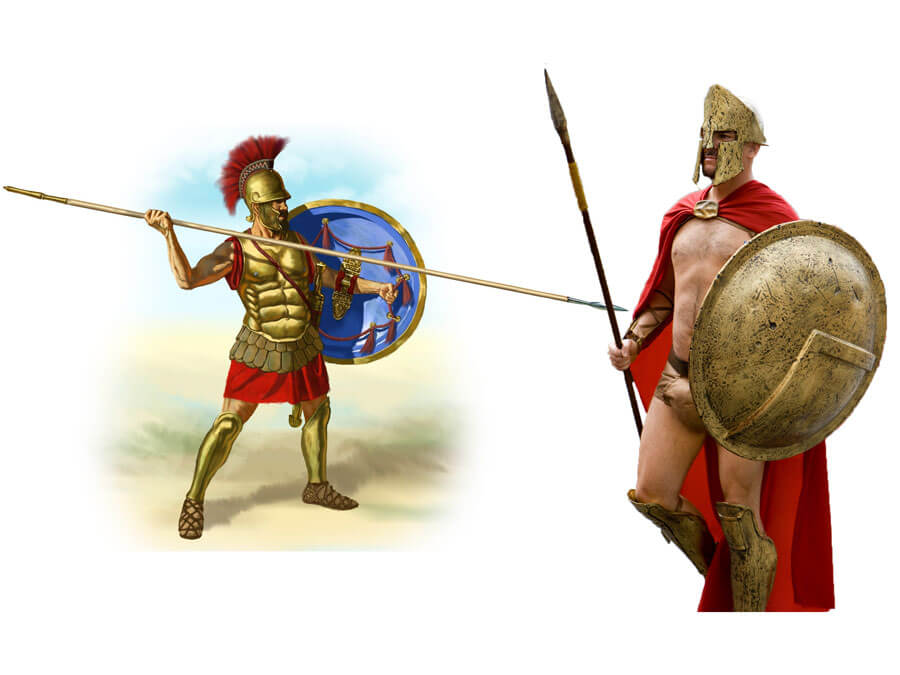
When it comes to the battle formation, the movie made significant changes again for cinematic purposes. The true strength of the Spartan army came from their battle formation, the phalanx! The strength of the phalanx relied on all men working together as one unit. Each warrior protected the one next to him with their shield, the most important equipment of a Spartan warrior. In the movie, the Spartan warriors break their formation on many occasions and run loose towards their enemies, fighting one to one. This would never happen in the real battle of Thermopylae, otherwise the ‘Hot Gates’, as it translates in English, would fall in an instant.
![Credit: John Steeple Davis [Public domain] The Spartan Phalanx against the Persian army](/images/Blog/300/300-movie-Spartan-phalanx.jpg)
The Characters
It is important to mention that King Leonidas was not the only King of Sparta. Sparta had two kings at the same time. When one was at war away from Sparta, the other was at home, looking at the political affairs and protecting Sparta from anarchy or uprising of the helots. In the movie of 300, King Leonidas is portrayed by Gerard Butler as a young man, probably around his 30s. The real King Leonidas was aged around 60(!) when he fell in Thermopylae.
King Xerxes had a beard and was, of course, much shorter than his character in the film. He never went to the front line of the Battle of Thermopylae and never had a face-to-face conversation with Leonidas.
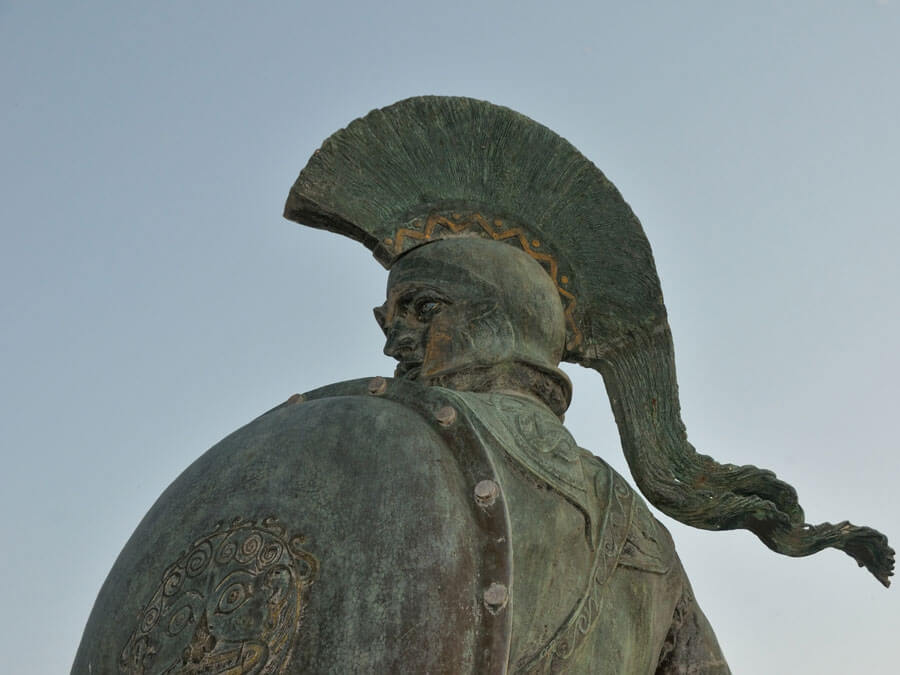
In the movie, Dilios, the Spartan warrior who lived to tell the story, is injured in the eye and is instructed by Leonidas to return to Sparta and tell everything that happened in Thermopylae. At the end of the movie, Dilios is shown as leading the united Greek army against the Persians in Plataea. The reality, however, is much different. There were two Spartan warriors who were stricken with a disease of the eye, according to Herodotus. Their names were Aristodemus and Eurytus. Leonidas ordered them to return to Sparta before the battle was over. However, Eurytus ordered his helots to take him back to the battle, though blind, and met his end charging into the fray. Aristodemus returned to Sparta and his fellow citizens saw him as a coward. He was subjected to humiliation and disgrace and was known as Aristodemus the coward. The fact that Eurytus had charged back in battle and met his fate was probably the reason for this treatment.
Aristodemus’ story doesn’t end there though. He endured all this humiliation and joined the army at the Battle of Plataea the following year. According to Herodotus, the Spartan warrior fought with such fury that the Spartans regarded him as having redeemed himself. However, they did not award him any special honors for this valor because he had fought with suicidal recklessness. The Spartans valued more those who fought bravely while still wishing to live. Aristodemus charged, berserker-like, out of the phalanx and fought, in the opinion of the historian, with the most bravery of all the Spartans before falling in battle.
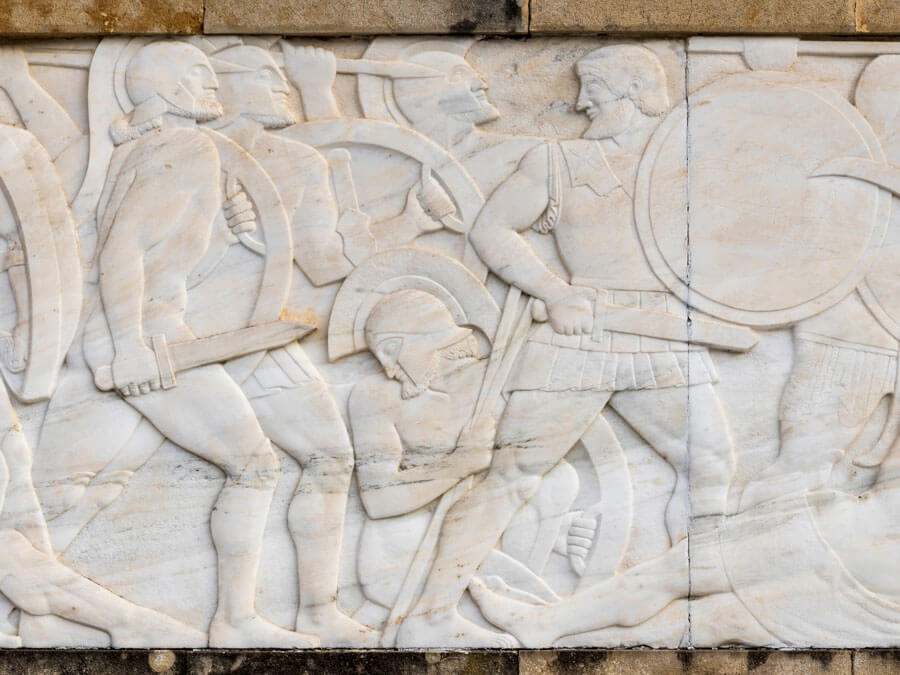
The Discarding of Unfit Offspring
The movie starts with the birth of a child in Sparta and its inspection. “If he’d been small or puny or sickly or misshapen... he would have been discarded.” Plutarch is the only source we have on the matter. According to the Greek historian (who lived half a millennium after the Battle of Thermopylae):
"If after examination the baby proved well-built and sturdy they [the state] instructed the father to bring it up, and assigned it one of the 9,000 lots of land. But if it was puny and deformed, they dispatched it to what was called 'the place of rejection', a precipitous spot by Mount Taygetus, considering it better both for itself and the state that the child should die if right from its birth it was poorly endowed for health or strength."
![[Public domain] “The Selection of Children in Sparta”, painting by Jean-Pierre Saint-Ours in 1785](/images/Blog/300/Killing-of-babies-in-Sparta---myth-or-reality.jpg)
However, recent studies have come to dispute the above statement. Athens Faculty of Medicine Anthropologist Theodoros Pitsios says after more than five years of analysis of human remains culled from the pit, researchers found only the remains of adolescents and adults between the ages of 18 and 35. "There were still bones in the area, but none from newborns, according to the samples we took from the bottom of the pit" of the foothills of Mount Taygete near present-day Sparta.
According to Mr. Pitsios, the bones studied to date came from the fifth and sixth centuries BC and come from 46 men, confirming the assertion from ancient sources that the Spartans threw prisoners, traitors or criminals, into the pit. He adds that the throwing of unfit babies “is probably a myth, the ancient sources of this so-called practice were rare, late and imprecise.” Meant to attest to the militaristic character of the ancient Spartan people, moralistic historian Plutarch in particular spread the legend during first century AD, more than 500 years after the Battle of Thermopylae.
Other Details
History does not mention anything about armed elephants and rhinos in the Persian camp at the Battle of Thermopylae, in contrast to the film. They were fantastic elements added by the creators. The Persians relied a lot on horses during the battle, with about 20% of their army consisting of cavalry.
The Immortals, who were Xerxes' personal bodyguards, did not wear the masks of the film, but wrapped clothes around their faces so that they could see from the inside. They were slightly more armed than the Greek hoplites. Their shields were made of wicker and were vulnerable to the Spartan weapons. They were called ‘Immortals’ because they always maintained their strength of 10,000 men since whenever someone was killed or injured, he was replaced by someone new.
In the movie, Leonidas is the only Spartan wearing a plumed helmet (a helmet with bands of horsehair that were affixed to the top of it). In reality, all Spartan warriors wore a plumed helmet. Frank Miller took this liberty “to make Leonidas stand out and identify him as a King”.
![Credit: John Antoni <a target='_blank' href='https://creativecommons.org/licenses/by-sa/2.0'>[CC BY-SA]</a> Bronze helmet of Corinthian type, with nail-holes in the top and cheek-pieces which show that it has been a trophy or victory offering. Exhibited at the British Museum](/images/Blog/300/Spartan-helmet-300.jpg)
The Persians were educated people with well-trained soldiers who had great respect for Greek culture. They were not a bloodthirsty or half-breed people as portrayed in the 300 movie and the rule of the Persian Kings was not as despotic as it is understood by watching the movie.
As for the training of young Spartans when they were hunting, they were never alone, but always in small groups, to learn how to work in a team and to minimize the risk.
One of the first and most characteristic moments of the film is when Xerxes sends messengers to Leonidas to ask for “earth and water”. The Persian messengers were indeed asking for “earth and water” from the Greek city-states, as a symbolism for their surrender and acceptance of the Persian rule. However, King Leonidas never really shouted “This is Sparta” and kicked the messengers into the pit. According to Herodotus, this incident (the killing of the Persian messengers) took place in the past and since then Xerxes never sent another messenger to Sparta again.
Why Thermopylae?
After abandoning the original plan to stοp the Persian invasion at the valley of Tempi, south to Olympus, the Greek war council decided to make their stand at Thermopylae. It was a conscious choice. We know from Herodotus and other historians that about 7,000 Greeks infantry soldiers moved to block the straits, under the Spartan leadership. At about the same level, the Greek fleet under the Athenian leadership would try to block the Persian fleet at the straits of Artemisium and hope for a decisive victory. The Greeks’ goal was to play with time, to delay the Persians as much as possible. A vast army like that would face huge problems with supplies and could not stay away from a fresh water source for long.
Thermopylae offered the perfect landscape for this kind of tactic. A small force could block the small passage between the mountain and the sea and try to delay the Persians as much as possible. Imagine a bottle with two mouths. We have the north narrow mouth above today’s Kamena Vourla and the south narrow mouth in Thermopylae. In the middle of them the ‘bottle’ widens. The Greeks fought first in the first narrow passage and then retreated, trapping the vast Persian army in the middle of the ‘bottle’. If Ephialtes had not betrayed the mountain passage that encircled the Greek army, no one knows how many more days the Greeks would hold Thermopylae.
Did you know? Ephialtes in Greek means “nightmare”!
![Credit: Therese Clutario <a target='_blank' href='https://creativecommons.org/licenses/by/2.0'>[CC BY]</a> Iron arrowheads and spearheads were found in the Koinos hill, where the last defenders of Thermopylae fell, slain by the arrows of the enemy](/images/Blog/300/Iron-arrowheads-and-spearheads-from-Thermopyles.jpg)
Who Were the Spartans Really?
The Spartans were a militaristic society. The occupation of men was to be warriors and they had slaves, the ‘helots’, as their workforce. They were born, raised and lived training in the art of war and joining war expeditions. Until the age of seven, the boys were raised by their parents, mainly their mother. From the age of seven, the children’s long-term public education began, called ‘Agoge’, a rigorous training program. The boy was taken from his family and was now under the care of the state. The aim of Agoge was for the men to become the “walls of Sparta”. Sparta was the only city-state with no defensive walls, after they had been demolished with the order of Lycurgus. The education of the children, however, was not only militaristic. They were learning how to hunt, dance, sing and become proper Spartan citizens.
The girls also had a form of state education that involved music, dancing, poetry, writing, gymnastics, sports and war education. However, the girls were raised in the house by their mother while being educated. High physical fitness and moral integrity were the ultimate goals of their education. The Spartan girls were also encouraged to help the males by humiliating them in public and by criticizing their exercising. Just as Spartan males were raised to become warriors, the females of Sparta were trained for their primary task: giving birth to warriors; as the saying went, "only Spartan women could give birth to men." Any male who did not successfully pass through the agoge was denied Spartan citizenship.
![Credit: Edgar Degas [Public domain] Young Spartan women urging the men to fight](/images/Blog/300/Spartan-men-and-women.jpg)
From the age of 20 and the successful completion of Agoge, the military service of the Spartan man began and continued uninterrupted until the age of 60. While in every other city-state the citizens had various other occupations - agriculture, handicrafts, trade, shipping, intellectual pursuits, moral pursuits and literary discussions - in Sparta the citizen was for the rest of his life a soldier and only a soldier. The Spartan's motto was "victory or death" or rather, as the Spartan women would say to their husbands going to war: “Come back with your shield or on it”. In other words, no Spartan should surrender or retreat. They would either come back victorious or dead on their shield.

Sparta's Role in the Greco-Persian Wars
Sparta's role in the Greek-Persian wars was decisive, but also heterogeneous. During the 1st campaign of the Persian Empire against the Greek world, after hearing the messenger Pheidippides, with whom Athens sought the help of the Lacedaemonians before the Battle of Marathon in 490 BC, the Spartans decided to first complete the religious ceremonies of Carnea before marching to Marathon. They reached the battlefield after the battle was over and the Athenians had defeated the enemy. During the second Persian campaign, under the leadership of King Xerxes I, Sparta faced the same dilemma. The Persians chose, not by chance, to campaign during the period of the Olympic truce, which had to be observed.
Other Greek cities with less hesitation set about creating a strong fleet. Eventually, it was decided that the Spartans would provide a small force under the orders of King Leonidas, in order to protect the then narrow passage of Thermopylae. However, there is always the opinion that the Spartans brought their religious customs to the forefront in search of a pretext. Those who hold this view believe that the Lacedaemonians believed that they would have no luck in defending Thermopylae, preferring to devote all their energy in defending the Isthmus of Corinth. However, they feared that if Athens fell or joined the Persians they would have no chance. The loss of the Athenian fleet would be disastrous for the Greek resistance, something that could not be endangered.
![Credit: Megistias <a target='_blank' href='http://creativecommons.org/licenses/by-sa/3.0/'>[CC BY-SA]</a> People dressed like Spartans warriors in Thermopylae](/images/Blog/300/300-tour-Thermopylae-today.jpg)
The other view, which is clearly based on the true outcome of the battle, supports that the Spartans were convinced that they could defend Thermopylae successfully even with the small force they sent. In the end, this battle created one of the most magnificent legends in world history and one of the greatest last stands. Some historians question the importance of the battle of Thermopylae for the outcome of the war. The Athenian fleet, hearing the fall of Thermopylae, immediately retreated from the straits of Artemisium towards Athens. It was the next naval battle, at the straits of Salamis, that was truly the turning point for this epic war. The battle of Salamis was the inspiration for the events that take place in the movie 300: Rise of an Empire. Many historians cite the Battle of Salamis as one of the most important battles in human history.
Thermopylae Today
Thermopylae took its name for the springs of hot water gushing through the ground. The name is a combination of two Greek words, “thermo”, meaning hot, and “pylae”, meaning gates. Thus, its rendering in English as “Hot Gates”. Today the landscape of Thermopylae is much different than in the 5th century BC. The narrow passage between the mountain and the sea is not so narrow but you can still see how it could have worked back then. Near the battlefield, there is a monument with a statue of King Leonidas. The figure of King Leonidas is inspired by a statue of an ancient warrior, found by the British School in 1920, and archaeologists have identified him with Leonidas.
![Credit: Dmpexr <a target='_blank' href='https://creativecommons.org/licenses/by-sa/4.0'>[CC BY-SA]</a> Statue of Leonidas in Thermopylae](/images/Blog/300/Leonidas_statue.jpg)
Next to it, you will also find the monument of the 700 Thespians who also fell at the last stand with their leader Demophilos. Less impressive and much simpler than the monument of the 300, the monument of the Thespians was erected much later, in 1997. The inscription on the monument reads: “In the memory of the 700 Thespians who, with Dimophilus as their leader, fell in the battle of Thermopylae in 480 BC alongside the 300 of Leonidas.” Walking towards the hill, you will find the stoned inscription of Simonides saying:
Stranger, go tell the Lacedaemonians
that here, obedient to their laws, we lie.
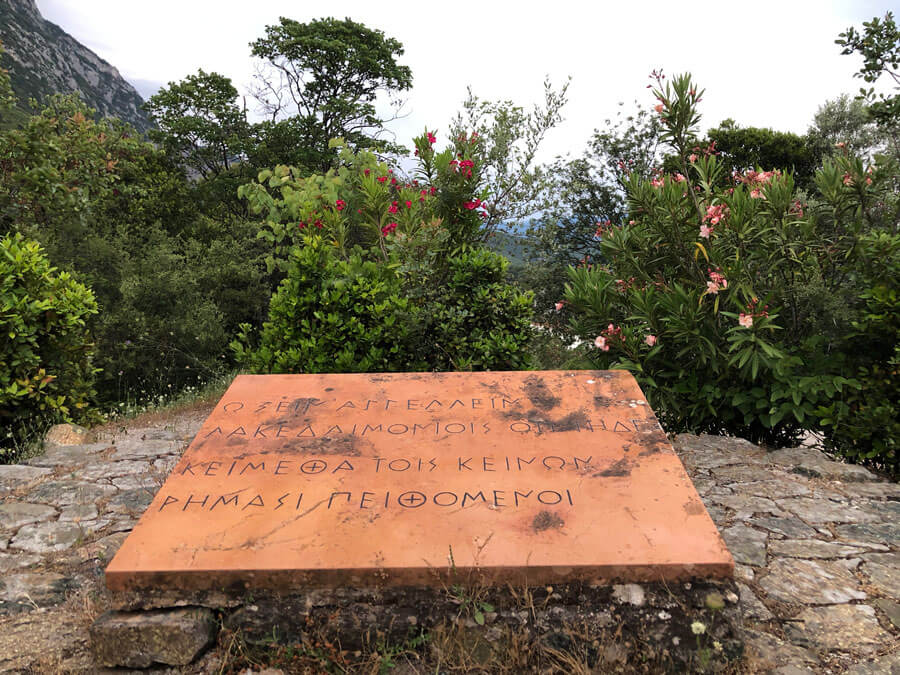
Near the monument of Leonidas, there is an information center for the battle of the Thermopylae that you can visit. There you will see the armor and equipment of a Spartan Warrior and you can watch interactively the representation of the battle of Thermopylae. A few hundred meters away, you will find the thermal springs and you can swim in them. The springs were dedicated to the Greek mythological hero Hercules and there was even an altar in the area dedicated to him. They are one of the 700 thermal springs that exist in Greece and are known to have healing properties. According to the legend, Hercules, in order to regain his strength after the deeds he performed, went to the baths of Thermopylae. Many visitors claim that their health has been restored because of the springs.
![Credit: Davide Mauro <a target='_blank' href='https://creativecommons.org/licenses/by-sa/4.0'>[CC BY-SA]</a> The information center for the battle of the Thermopylae](/images/Blog/300/Museum-of-battle-of-Thermopylae.jpg)
If you are a fan of the "300" movie and the legendary battle of Thermopylae, then this is a must-visit when you visit Greece. Thermopylae is about 2 hours away from Athens by car and you can join a guided tour from Athens to fully comprehend the importance of the battle in the context of the Persian Wars and the course of Greek history. Walking in the place where these heroes fell is a special feeling indeed. Contact us to arrange a guided trip with an expert guide.
You may also like:




